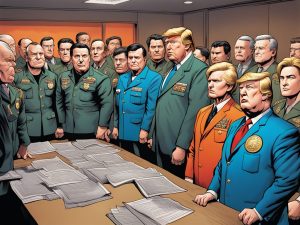The Tenuous Balance of Power in Global AI Supremacy
U.S. Senator Mike Rounds’ recent remarks at the World Economic Forum have highlighted a crucial aspect of the technology race between the United States and China. The U.S. perceives its lead over China in AI technology as marginal, measurable in months rather than years. This underscores the rapid advancements in AI and the importance of maintaining a competitive edge.
China’s Growing Prowess in AI
China has been making significant strides in AI technology, with major companies like Baidu, Alibaba, and Tencent introducing new AI technologies and integrating large language models into various services. These advancements challenge the U.S.’s position as a leader in the field.
Implications of U.S. Restrictions on Chip Exports
The restrictions on chip exports from the U.S. to China have implications for both countries. While aiming to curb China’s progress, these actions are seen as an infringement of market principles and detrimental to the global semiconductor market. For China, being the world’s largest semiconductor market, these restrictions hinder economic and technological cooperation between the two nations.
Challenges Faced by China’s AI Sector
China’s AI sector faces challenges such as limited access to advanced chips due to U.S. sanctions, stringent regulations, high development costs, and a technology gap with Western countries. These constraints highlight the competitive nature of the global AI landscape.
China’s Pursuit of AI Development
In response to these challenges, China is actively fostering an internal AI market and global positioning. However, concerns remain regarding duplicated efforts and the need to develop scalable AI products. The country must overcome limitations in computing power and develop a mature AI training ecosystem.
The Technological Tug-of-War
The U.S.’s decision to restrict chip exports to China is a strategic move to maintain technological supremacy in AI. However, China’s rapid advancements demonstrate its growing capabilities and the competitive nature of the global AI race. This tug-of-war between the two superpowers is shaping the future of AI development across various industries.
Hot Take: The Battle for Global AI Supremacy
The ongoing battle for global AI supremacy between the United States and China highlights the rapid advancements and competitive nature of this field. While the U.S. aims to maintain its technological lead through restrictions on chip exports, China is making significant strides in AI technology. This tug-of-war has implications for economic, technological, and geopolitical dynamics. The outcome will shape the future of AI development and its applications in areas such as national security and consumer technology.





 By
By
 By
By
 By
By
 By
By

 By
By